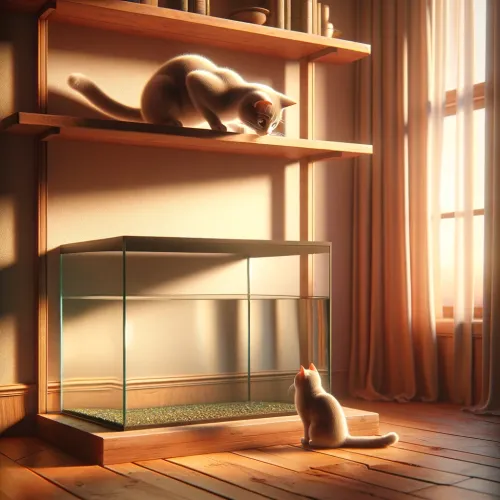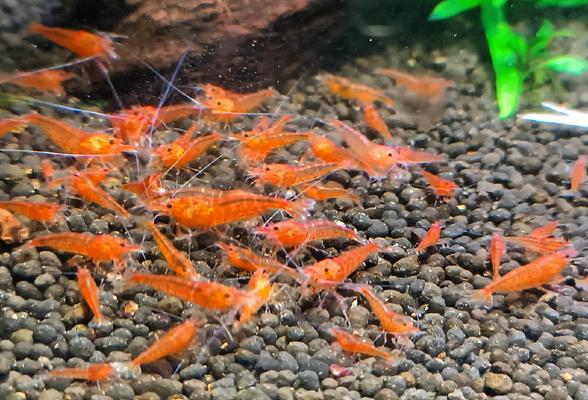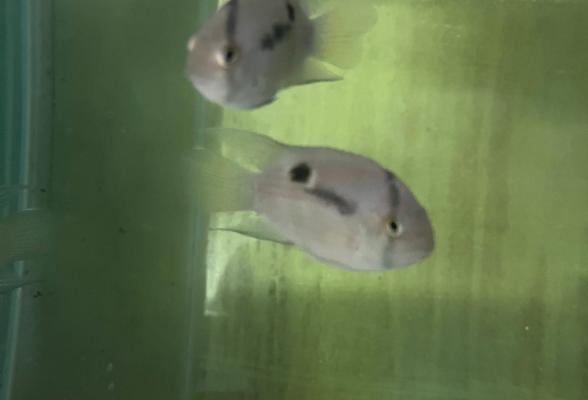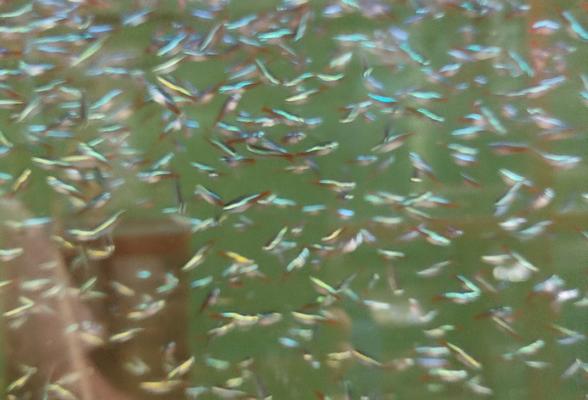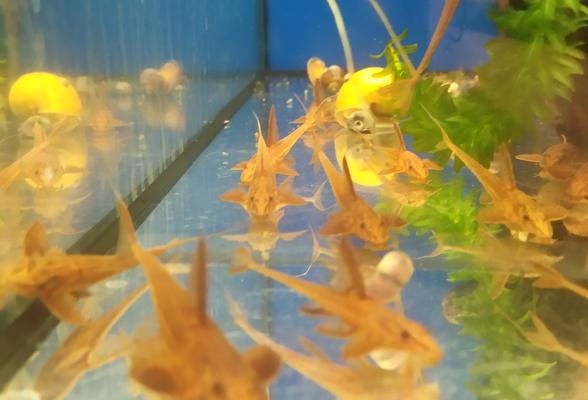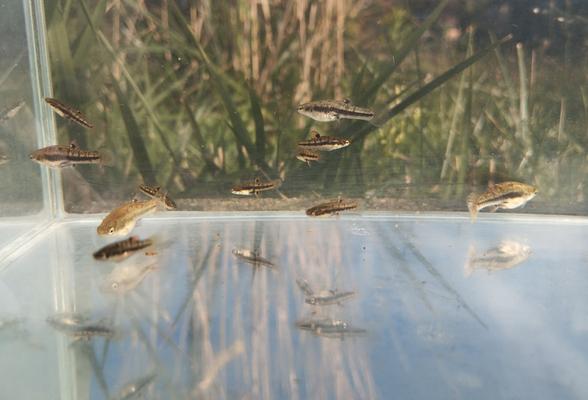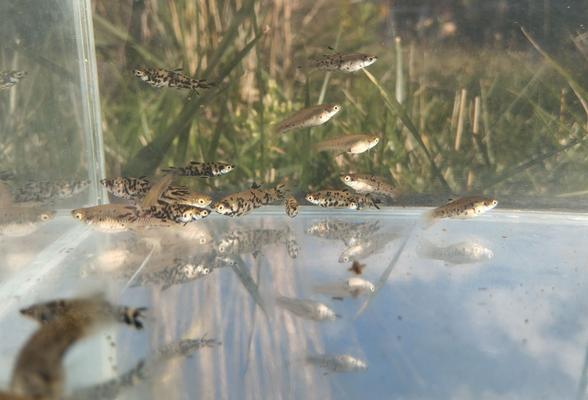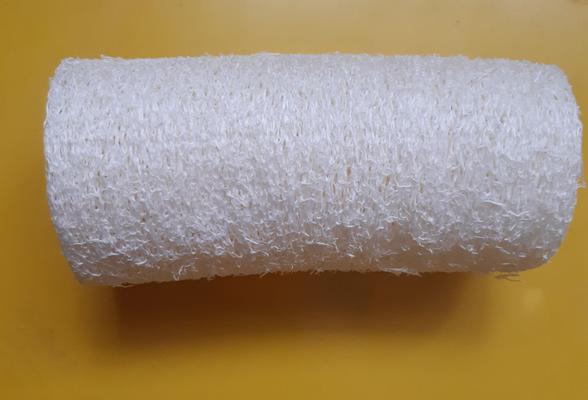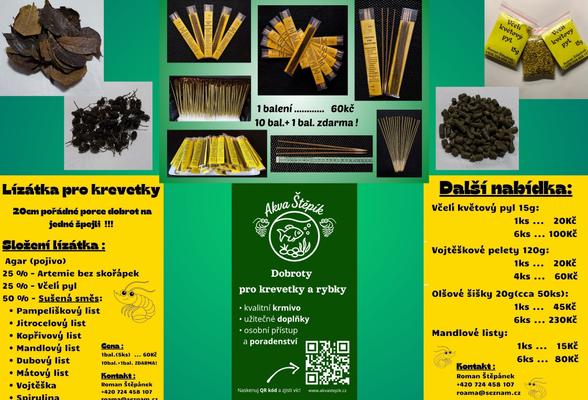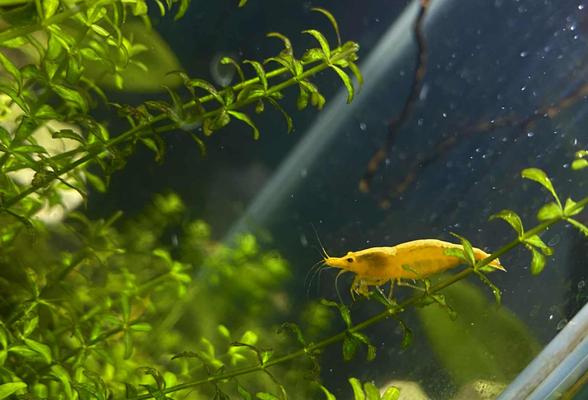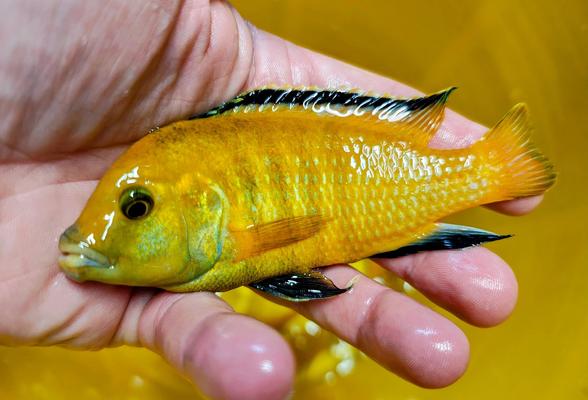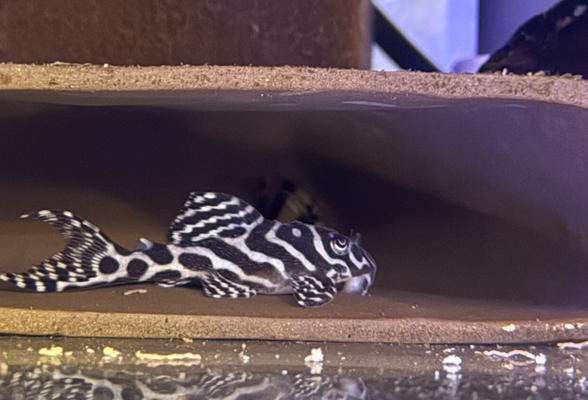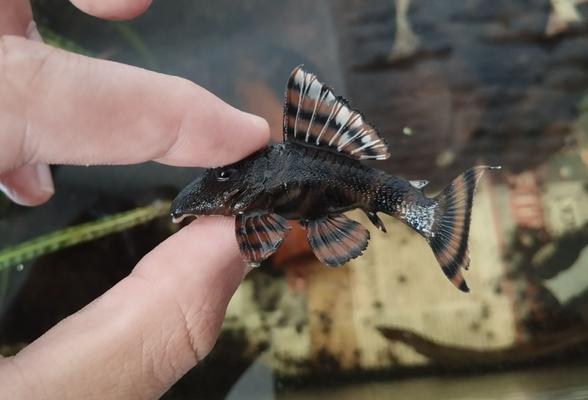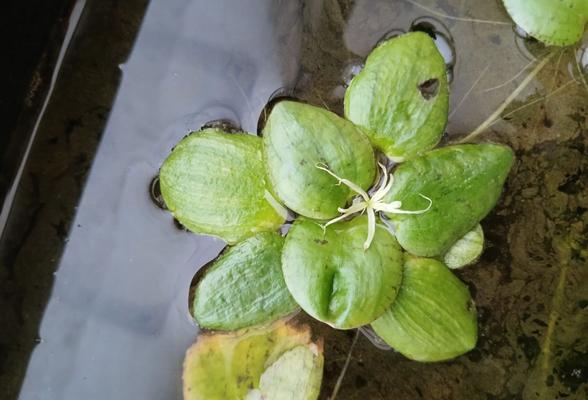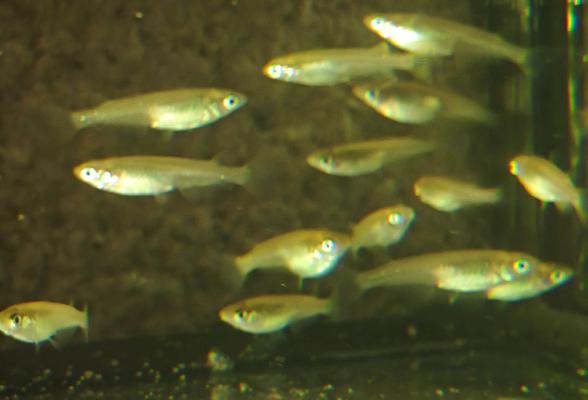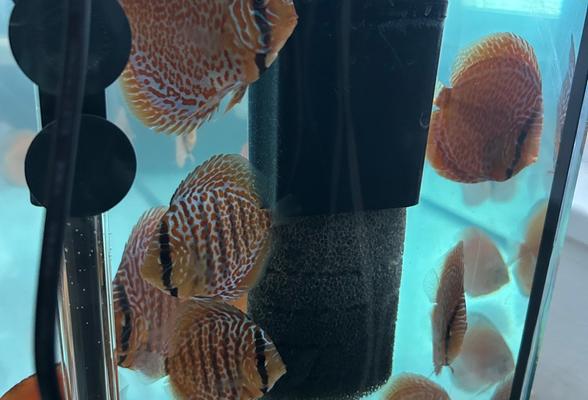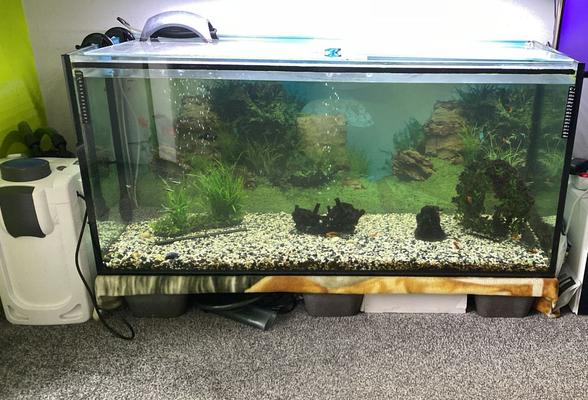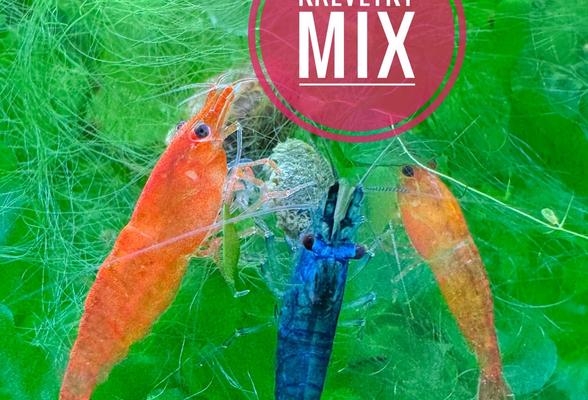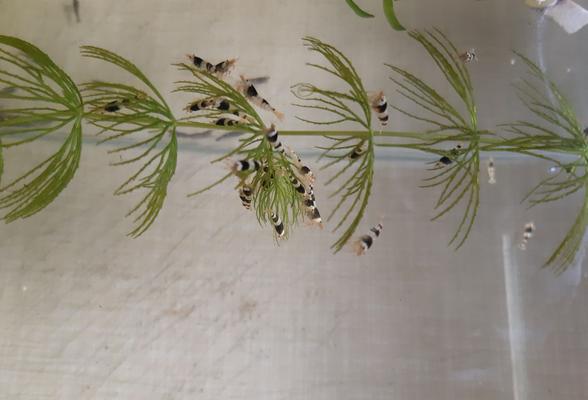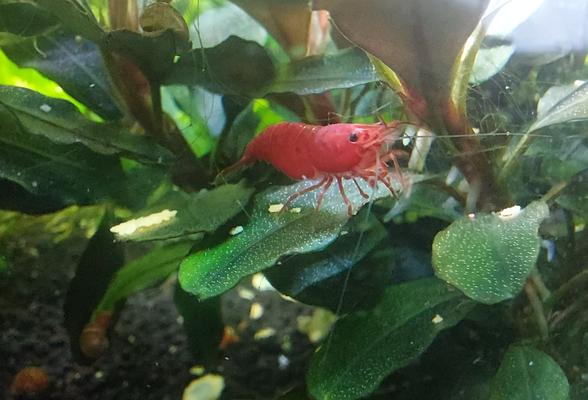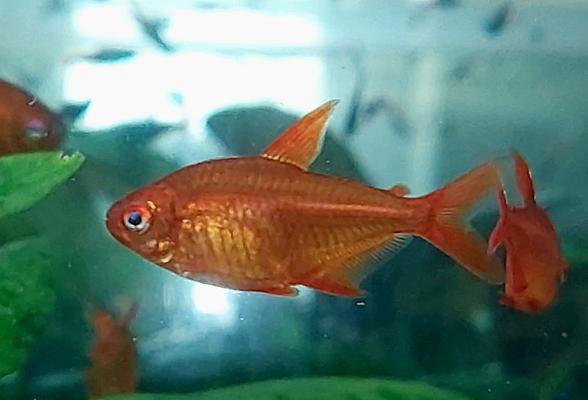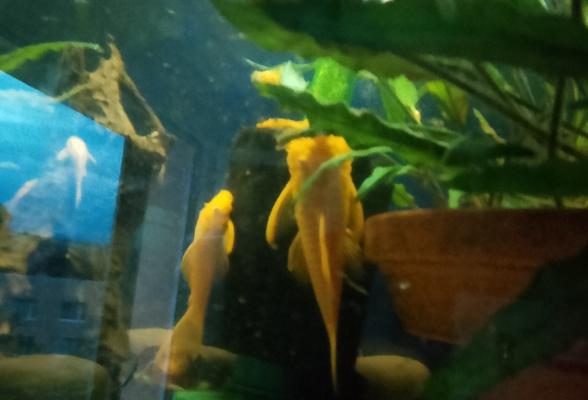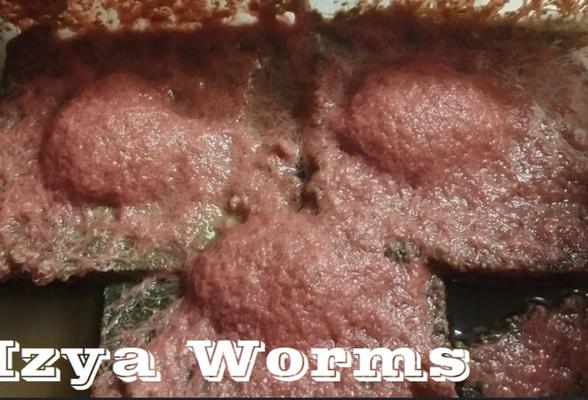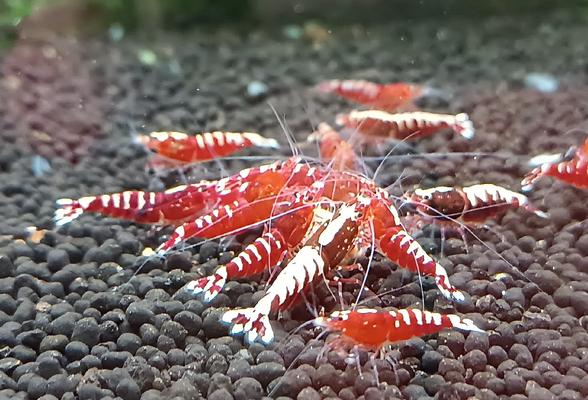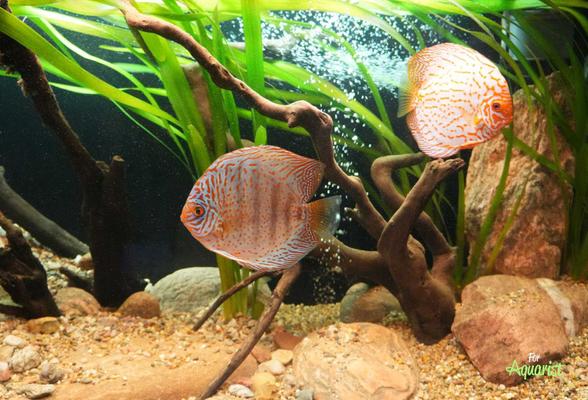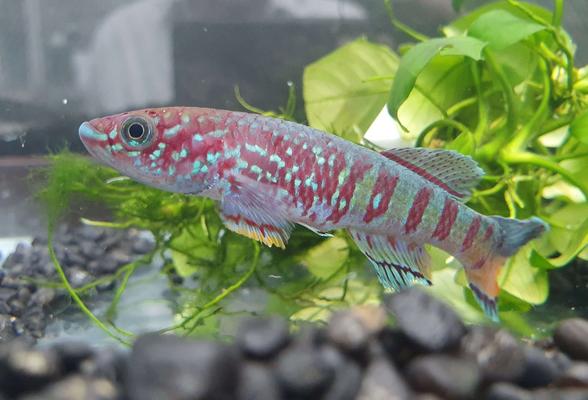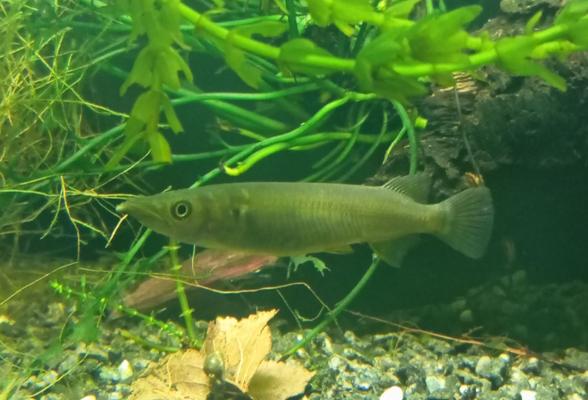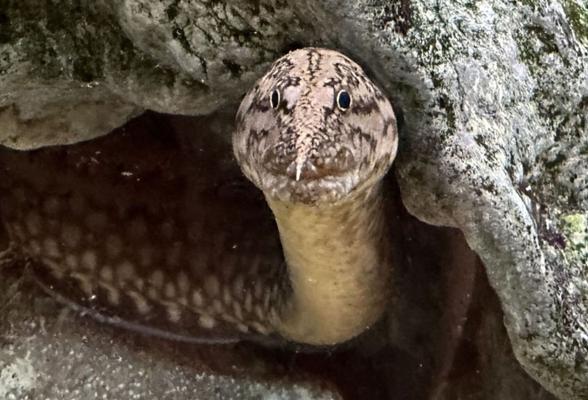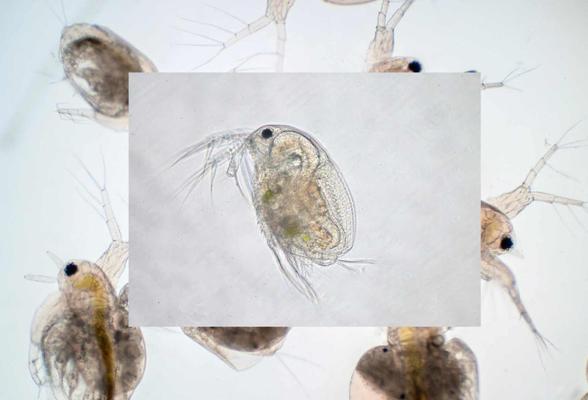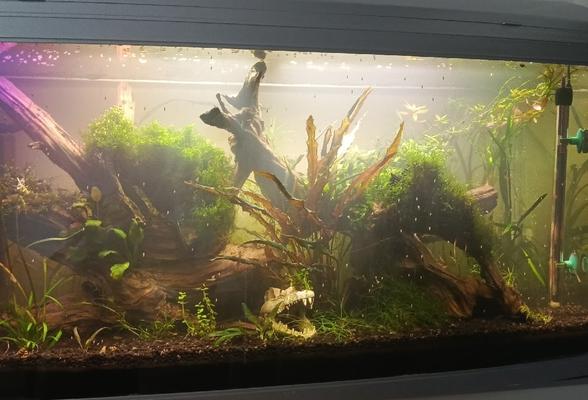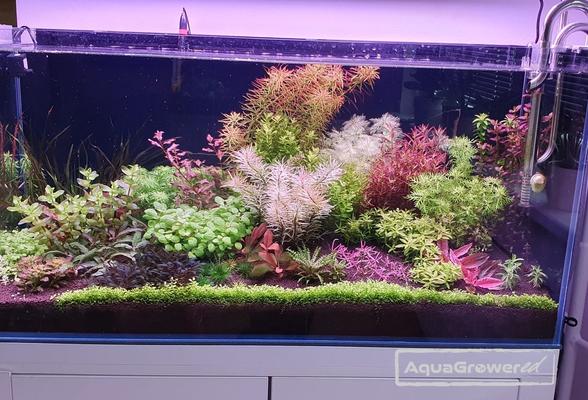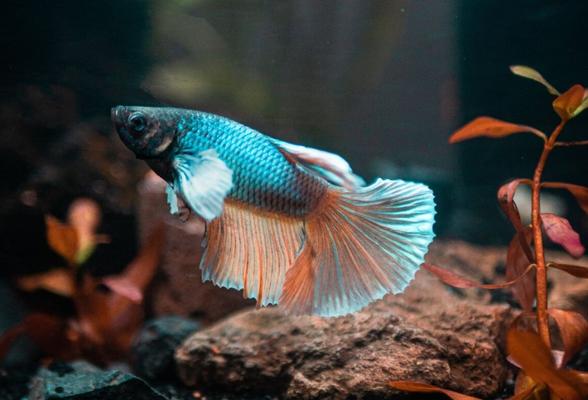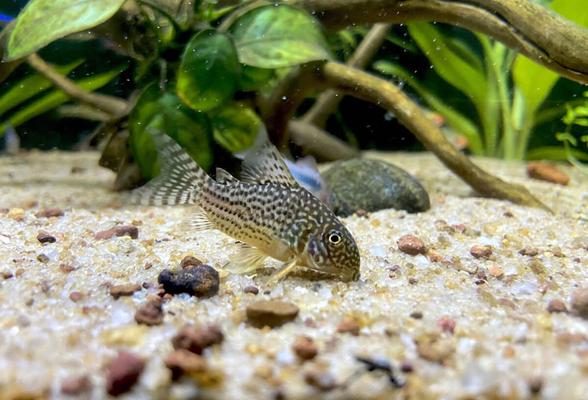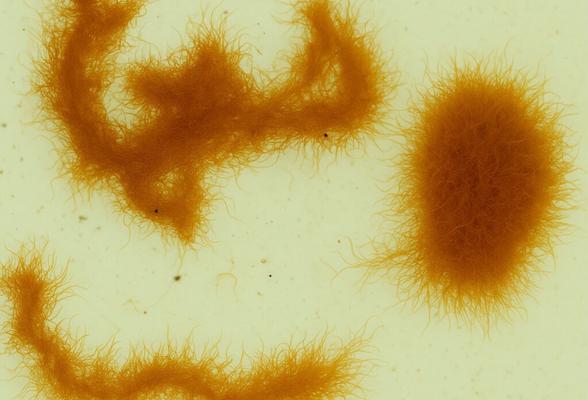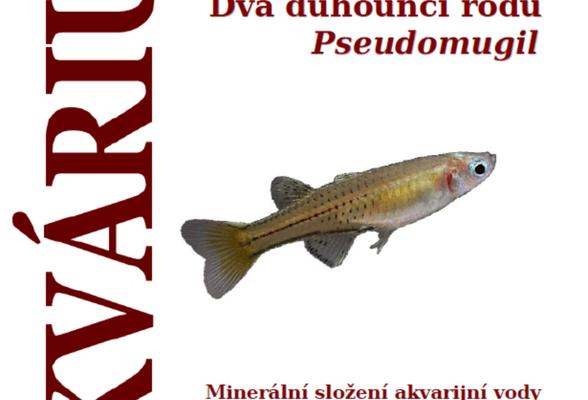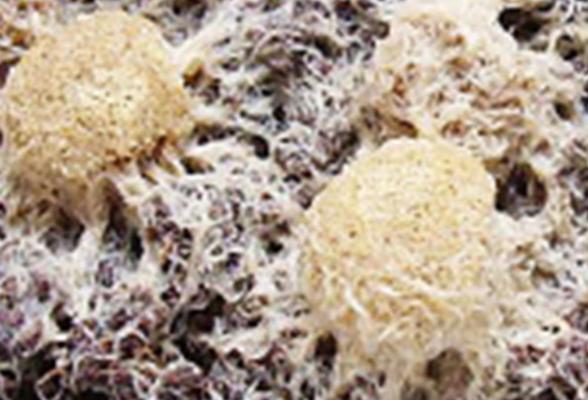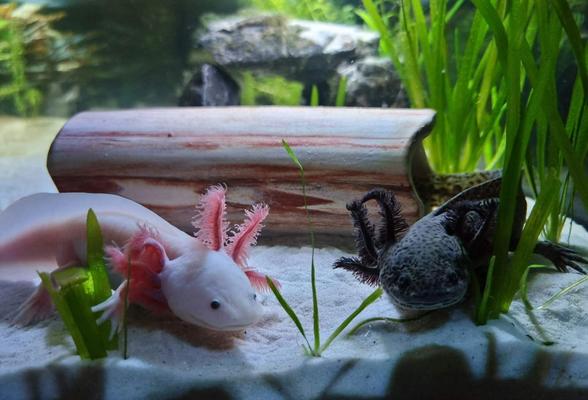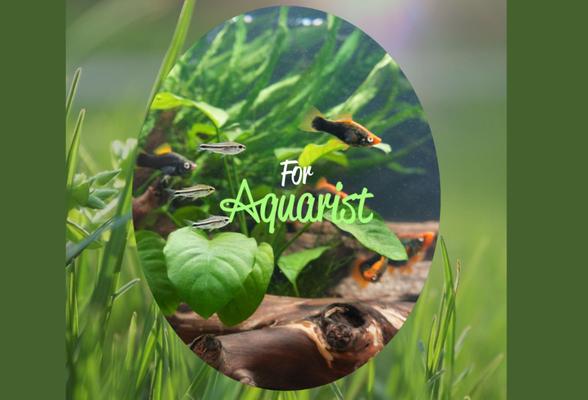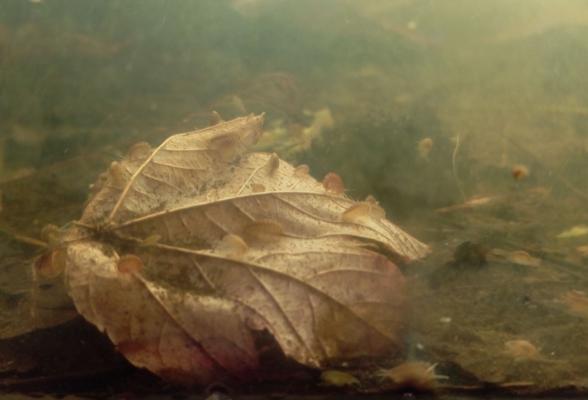Let yourself be tempted by a great aquarium exhibition in Rychnov n. Kněžnou organized by the Akva-tera association, now for the 46th time.
You will see newly reconstructed spaces and a slightly different take on the exhibition. It is definitely worth it. To start, we attach a few photos as a teaser.
More information can also be found here (https://www.foraquarist.com/novinky/311-akvarijni-vystava-akvaexpo-13-az-21-zari-2025-v-rychnove-nad-kneznou).
I had a moment to stop by the International Killifish Exhibition at the Botanical Garden in Prague, which starts today. Although some aquariums are still empty, many beautiful killifish can already be seen (for example, in the photos, Fundulopanchax sjostedti - Blue Killifish in the "Red Dwarf" variant and Aplocheilus lineatus - Golden Striped Killifish). In addition to the exhibition, other aquarium fish can also be seen in several permanent aquariums (also in the photos), which are very well done.
Entry to the exhibition is practically free; you only pay for entry to the Botanical Garden, which is 100 CZK. The killifish exhibition is definitely worth a visit! 😎
Exhibition Annotation:
The International Killifish Exhibition takes place in Prague from September 11 to 14, 2025, at the Botanical Garden of Charles University at Na Slupi 16. The exhibition will showcase beautifully colored aquarium fish with unique life cycles and behaviors, including demonstrations of some species that can adapt to life on land. On Sunday, September 14, a traditional market will take place, where visitors can purchase fish and try their breeding.
More information is also available here: https://www.foraquarist.com/novinky/358-halancici-dobyvaji-prahu-mezinarodni-vystava-a-burza-od-11-do-14-zari-2025
A new addition to the breeding of halfbeaks. During my visit to the Papík company in Dříteč, I brought home two new halfbeaks.
Hello,
here are some pictures and inspirations from my Malawi Lake aquarium, where I keep Malawi predators and non-Mbunas.
Here you can see:
Exochochromis anagenys, Aristiochromis Chrisityi, Copadichromis borleyi Kadango, Mylochromis mchuse, Mylochromis epichorialis,
Nimbochromis fuscotaeniatus, Placidochromis phenochilus Mdoka "White Lips", Protomelas taeniolatus Boadzulu, Stigmatochromis tolae
If you have any questions, feel free to contact me.
Best regards, Manfred
Hello,
the DCG e.V. has adjusted its website so that "Czech" is now selectable as a site language.
Thus, the extensive information should also be well usable for Czech aquarists who do not speak many foreign languages.
To reach: www.dcg-online.de
If you have any questions, feel free to contact me or Linda.
Best regards, Manfred
Hello to all aquarists,
my first attempt to write an article here.
I put the spiny eel in my Malawi tank because the Malawi predators don't really expend much energy hunting the fry. They always get something from me, so there's no need to overexert themselves. 😉
My C. borleyi Kadango regularly produces about 50-90 fry! Very few of them don't make it! Almost all fry survive with the Kadangos. This means the tank gets overcrowded in a short time! Unfortunately, giving them away in such quantities doesn't work either. 🤔
This species of spiny eel from Lake Tanganyika is truly fascinating, very intelligent, and exhibits very independent behavior in the tank.
The number one aspect of its behavior is that it is an effective and intense hunter; nothing escapes it! Mine is now about 50 cm long after years!
Caution: The fish population must be at least >10 cm; otherwise, it will end up in the stomach of M. moorii sooner or later!!
I can also report the following: for example, it eats from my hand, reacts almost immediately to my hand signals, etc.
Brief species description:
Genus: Mastacembelus
Species: moorii
Trade name: Tanganyika Spiny Eel
Continent, Lake: East Africa, Lake Tanganyika (endemic)
Tank size: min. 200, better 250 - 400 cm length, depth 60-80 cm
Water temperature: 22 - 26 °C
pH value: 7.5 - 9.0
max. size: 45-50 cm possibly even more
Food: Frozen food, live food (mussel meat, krill, crab pieces, (if smelt, then feed rarely))
They do not take flakes, granules, or similar!
Hunting behavior: They hunt and eat anything that barely fits in their mouth or can be overwhelmed.
Care: Sociable with large cichlids, nocturnal
Tank design: Make the tank safe for eels! The animals will "climb" out of the tank whenever possible. They are very curious!
For questions, I am happy to help.
Best regards, Manfred
30-liter nano cube aquarium that I have for relaxation in the photo studio :)
Daphnia magna, also known as the large water flea, are small aquatic crustaceans that are ideal livefood for fish. Their cultivation is relatively simple and economical. To successfully raise daphnia after acquiring this great livefood, I have prepared a detailed guide for you.
1. Establishing the culture
a) Tank
Size: For starters, a 10-20 liter tank (aquarium or plastic box) is sufficient. For larger production, you can also use larger containers (50-100 liters).
Material: Glass or food-grade plastic are ideal. Avoid metal containers that may release toxic substances.
Location: Place the tank in a spot with diffused light, not in direct sunlight. A stable temperature is ideal.
b) Water
Type: The best is standing tap water (let it sit for at least 24 hours, ideally longer, to allow the chlorine to evaporate). You can also use rainwater or water from an already established, healthy aquarium.
Temperature: The optimal temperature for breeding is between 18-25 °C. At higher temperatures, daphnia reproduce faster, but have a shorter lifespan.
Hardness: Daphnia prefer moderately hard to hard water. However, they can also thrive in water with a lower pH, around 6.
c) Starter culture
Purchase the starter culture from a reliable supplier, ideally here on ForAquarist from verified breeders. Keep in mind that daphnia are very sensitive to changes in their environment, so they may take some time to acclimate to the new conditions.
2. Feeding
Feeding is the most important factor for successful daphnia cultivation. They are filter-feeding organisms that feed on microscopic algae and bacteria.
Feeding options
a) Green water: This is the best and most natural food. You can prepare green water by leaving water with a little organic matter (e.g., dried nettle leaves) in the sun until it becomes cloudy with green algae.
b) Brewer's yeast: Dissolve a small amount of dried brewer's yeast in water and add it to the tank. Yeast is rich in proteins and vitamins. Dose very carefully to avoid overfeeding and spoiling the water.
c) Yeast: Dissolve a small amount of yeast in warm water and let it stand for at least an hour. Then feed so that the water is slightly "milky." Once the daphnia clear the water, you can add more.
d) Spirulina or chlorella powder: Very nutritious and readily available food. Again, dose very small amounts.
e) Egg yolk: A tiny amount of boiled egg yolk mashed in water can serve as emergency food. However, you must be very careful, as it is very easy to overfeed.
Dosing
Feed small amounts; if you are starting out, it is better to feed twice a day than to add too much food. The water should be slightly cloudy after feeding, but it should clear up within a few hours. If the water remains cloudy for a long time (from my experience - more than a day and a half), you are overfeeding. Overfeeding is a common cause of culture collapse.
Watch how the daphnia move. If they are actively filtering (moving their limbs quickly), they have enough food.
3. Maintenance of the culture
a) Water change
Regularly (e.g., once a week) siphon off sediment and sludge from the bottom of the tank. It is recommended to replace 10-20% of the water volume with fresh, standing water.
Never change all the water at once.
b) Aeration
Daphnia do not need water flow, but gentle aeration helps maintain optimal oxygen levels and prevents the accumulation of organic matter. A weak air stone is sufficient. You can also conduct the culture without aeration, but you must be more careful about the placement of the tank and the number of daphnia.
c) Monitoring the population
Regularly check the daphnia population. If you see many dead individuals, the population is decreasing, or there are few small daphnia, you need to check the water quality and feeding.
Under optimal conditions, daphnia reproduce quickly, and small individuals are visible.
4. Collecting daphnia
Daphnia are best collected with a fine net.
You can catch them directly from the tank and immediately feed them to the fish, or you can keep them in a separate container with fresh water for later use.
5. Common problems and solutions
Cloudy water and odor: Overfeeding. Immediately reduce feeding amounts and change part of the water.
Population collapse: This can be caused by sudden changes in temperature, pH, toxic substances in the water (chlorine, heavy metals), or lack of food. Check all parameters and ensure the water is fine.
Cultivating Daphnia magna will bring joy to any aquarist who wants to offer their fish a natural and nutritious food source. With a little patience and adherence to these guidelines, you will soon enjoy a plentiful supply of these tiny crustaceans.
Successful breeding!
Izya worms also known as Israel Tubifex are an excellent live food that you can relatively easily breed at home. You can obtain starter cultures for your own breeding, for example, from Mr. Dorňák, a specialist in live aquarium feed.
🏞️ Origin and Natural Habitat of Betta Fish
The Betta fish originates from Southeast Asia, specifically Thailand, Cambodia, and Laos, where it inhabits slow-moving or stagnant waters, such as rice paddies and shallow ponds. Thanks to a special labyrinth organ, it can breathe atmospheric oxygen, allowing it to survive in environments with low oxygen levels.
🏠 Suitable Aquarium
- Volume: At least 20–30 liters for one male.
- Shape: A rectangular or square aquarium is more suitable than the often-used round containers, which can stress the fish.
- Cover: It is recommended to cover the aquarium to prevent the fish from jumping out and to maintain a stable air temperature above the water surface.
- Filtration: Mild filtration is appropriate; a strong water current could stress the Betta.
- Heater: Maintain the water temperature between 24–28 °C.
- Lighting: Moderate lighting will enhance the fish's colors and help reduce their shyness.
🌿 Aquarium Equipment for Bettas
- Substrate: Fine sand or gravel.
- Plants: A densely planted aquarium with live plants will provide hiding spots and improve water quality.
- Hiding spots: Roots, stones, and other shelters are welcome; avoid sharp objects that could damage the Betta's fins.
🧼 Aquarium Maintenance
- Water change: Regularly change 25–30% of the water weekly.
- Cleaning: Remove algae and debris from the glass and decorations.
🍽️ Suitable Feeding for Betta Fish
The Betta is a carnivore. Suitable food includes:
- Pellets and flakes: Specifically designed for Bettas, with a high content of animal protein.
- Frozen or live food: Such as mosquito larvae, daphnia, or brine shrimp.
Feeding frequency: Feed 1–2 times a day in small amounts; remove excess food to prevent water pollution.
👥 Behavior and Co-habitation of Bettas
- Males: Highly territorial; never keep two males in one aquarium.
- Females: Less aggressive; can be kept in a harem (1 male to 2–3 females) in a larger and densely planted aquarium.
- Community aquarium: Betta fish can be kept with non-aggressive species of fish, such as rasboras, neon tetras, or corydoras. Avoid fish with long fins or aggressive species that could stress the Betta or nip at its fins.
🐣 Breeding Betta Fish
The male builds a bubble nest at the water's surface. After spawning, the male transfers the fertilized eggs to the nest and cares for them until the fry hatch. After hatching, it is advisable to separate the young males to prevent cannibalism.
🐡Corydoras are very popular aquarium fish, so it's worth taking a closer look at their characteristics; some information might be new to you.
1. They live in groups – and suffer when alone
Corydoras are typically shoaling fish that need the company of their own kind. In a group of at least six, but preferably more individuals, they are more active, less stressed, and exhibit their natural behavior.
2. They breathe not only through gills but also through their intestines!
In addition to gills, Corydoras can absorb oxygen through their intestinal epithelium. You will often see them quickly surfacing to gulp air – this compensates for the low oxygen content in the water.
3. They are covered in "armor"
The bodies of Corydoras are not covered in regular scales but rather by two rows of bony plates (known as "armor") on the sides. These provide protection against predators and mechanical injuries.
4. Quiet but very curious fish
Although they are calm and peaceful, Corydoras are very curious and active, especially when foraging on the bottom. They have an excellent sense of smell and sensitive whiskers that help them search for food.
5. The genus of Corydoras has more than 170 species
The genus Corydoras is one of the largest genera of freshwater fish. It includes over 170 scientifically described species and dozens of other forms, color varieties, and local forms. For example:
Corydoras paleatus (spotted corydoras)
Corydoras aeneus (bronze corydoras)
Corydoras panda (panda corydoras)
Corydoras sterbai (Sterba's corydoras)
6. The female collects eggs in pockets made from her own fins
During spawning, the male fertilizes the eggs, which the female then carries and sticks to surfaces like glass, plant leaves, or decorations using her abdominal fins.
7. They are not "cleaners" – they need their own food
Although they collect leftover food from the bottom, they are not a cleanup crew. They require quality food, ideally sinking pellets, live or frozen food (such as bloodworms, daphnia, mosquito larvae).
8. They inhabit South America – even extreme conditions
Corydoras primarily come from the Amazon basin, but they also inhabit small streams, seasonal pools, and flood areas. Some species can survive in murky or oxygen-poor water.
9. They are ideal for community aquariums
Due to their gentle nature, they are well-suited to tetra fish, livebearers, gouramis, and small cichlids. It is important that the bottom of the aquarium is not sharp – fine sand is best.
10. They can live up to 10 years
With good care, Corydoras can live 8 to 10 years, and in rare cases even longer. A suitable group, stable conditions, and quality nutrition will ensure them a long and happy life.
Aulophorus furcatus (also known as Auloforus, Dero worm, Microflex, Microworms) is a small worm from the order Oligochaeta, related to nematodes, which is used in aquaristics as live food. It is ideal for feeding fry, smaller species of fish, and some invertebrates due to its fine size and movement that triggers the natural hunting instinct in fish.
🧬 Characteristics
Size: approx. 1–2 mm in diameter, length up to several centimeters (usually 1–3 cm)
Color: translucent white to pinkish
Movement: swims or undulates in the water column, sometimes forming colonies on the substrate surface
Habitat: freshwater, often found in biofilm and on sediments
🎣 Use of Dero worms in aquaristics
Auloforus is suitable:
- as excellent food for freshly swimming fry (e.g., livebearers, labyrinth fish, tetra fish), fish fry, as well as juvenile and adult fish
- also for small fish (e.g., rasboras, borneo suckers, pseudomugils)
- for demanding species of fish during recovery or breeding periods
The natural movement of Auloforus stimulates fish to hunt and aids in their healthy development and growth. Another advantage is that there is zero risk of introducing any diseases to aquarium fish when breeding at home, as Dero worm reproduces by division.
🧰 Breeding and Harvesting
- cultivation is similar to that of micro-worms: moist substrate (sponge, preferably bio-sponge, filter wool), water with a high organic content.
- can also be bred in a closed plastic container submerged underwater
- fed with finely ground oatmeal or blended flakes
- harvested by scraping worms from the surface or through a fine sieve.
- Auloforus colonies have an enormous reproductive capacity
- in overstocked or poorly maintained tanks, Auloforus can overpopulate and signal an excess of nutrients in the aquarium. On the other hand, overpopulation does not necessarily cause any harm.
Auloforus is an excellent supplementary live food for aquaristics, appreciated by both beginners and advanced breeders when raising more sensitive species of fish. It is easily available, simple to breed, and due to its delicacy and movement, it is ideal even for the smallest fish.
The care of the axolotl (Mexican axolotl, Ambystoma mexicanum) is not complicated, but it requires specific conditions different from those of regular tropical aquariums. Its natural habitat consists of cool mountain lakes in Mexico, such as Lago de Chalco (now practically dried up) and Lago de Xochomilco, where the population survives in a small part of the lake's canal system. Unfortunately, the ongoing urbanization around Mexico City and the associated pollution pose a significant threat to the natural habitat of axolotls. Another problem is the spreading of non-native species, such as perch, which prey on young axolotls and compete for food resources. As a result, the population of axolotls in the wild has sharply declined and they are now critically endangered.
Optimal conditions for axolotl care:
- Water temperature: 16–20 °C, ideally up to 18 °C, higher temperatures are stressful and can even cause death
- The pH value of the water must be monitored, it is recommended to maintain it around 7.4 - 7.6
- Water chemistry: the water must not be chlorinated, chlorine must be allowed to evaporate or be removed
- Tank volume: min. 60 l per individual
- Substrate: preferably fine sand or bare bottom
- Lighting: weak to shaded
- Filtration: calm, without strong current
❗ Axolotls really do not like heat. Temperatures above 23 °C can be stressful and, in the long term, fatal.
Axolotls are relatively long-lived and can live for 15 years or more, so it is essential to seriously consider their care.
We are pleased to announce the freshly released 64th issue of the magazine e-Aquarium.
In this issue, among other things, you will find:
🐟 Two rainbowfish of the genus Pseudomugil
🐠 A new livebearer Phalloceros mimbi
💧 Mineral composition of aquarium water
🌿 How Xiphophorus evelynae lives in nature
🍃 Pogostemon helferi var. red – an interesting plant novelty for detail lovers
📄 The magazine is available for download in PDF format on the website e-akvarium.cz
🌐 Individual articles are also available online directly on the website
White worm, commonly known among aquarists as grindal (Latin Enchytraeus buchholzi) was first described by Professor František Vejdovský of Charles University in Prague in 1879. The first to cultivate grindal was Swedish aquarist Nancy Grindal in the 1940s, after whom these worms received their commonly used name. Compared to other nematodes, they have the advantage of smaller size (often around 1-1.5 cm) and a greater willingness to reproduce, and they are not as demanding in maintaining the correct temperature.
📢 Why is grindal so popular among aquarists? 📢
👉 Easy breeding - they do not require much space and can be kept in containers.
👉 Nutritious food - grindal contains a high protein content, supporting fish growth.
👉 Suitable for small fish - ideal for livebearers, rasboras, tetras, and fry of larger species.
👉 High daily yields - with proper care, grindal can be harvested every day.
Grindal worms are the ideal live food for small aquarium fish.
Grindal reproduces easily, the worms are nutritious, and almost any aquarist can keep them even without prior experience. Due to their size and adaptability, they are considered one of the best live foods for smaller aquarium fish and fry.
If you are interested in the topic of live food, check out the overview of live food in the Magazine at https://www.foraquarist.com/novinky/135-zive-krmeni-cast-1
And if you have decided to try grindal, take a look at the current offers directly from aquarists: https://www.foraquarist.com/hledani?fulltext=grindal
Axolotl (also commonly known as the water dragon) originates from high-altitude lakes in the Mexico City valley. Its name likely either refers to the Aztec god Xolotl or has its origins in the translation of "strange/mysterious animal."
The axolotl is a unique amphibian that does not transform into a terrestrial form in adulthood – it remains permanently in the larval stage and has the ability of so-called neoteny - to reproduce sexually in the larval stage while retaining external gills and larval body characteristics. The natural habitat of the axolotl is currently facing ecological collapse, and the species is unfortunately critically endangered in the wild.
The beginnings of European captive breeding:
- 1864 – the first live axolotls were brought to Europe (Paris, Jardin des Plantes), from where they spread to laboratories and private breeding.
- since the 20th century, axolotls have been widely bred in laboratories around the world for the study of development, regeneration, and genetics.
Most of today's domesticated axolotls come from a few original lines and genetically differ significantly from the wild population. If you are interested in more, take a look at the article Axolotl – the aquarium lizard with the smile of Mona Lisa
The photo of beautiful axolotls is by T K (Unsplash).
🍃Sea almond leaves (Terminalia catappa)🍃, also known as "Catappa leaves", are a great addition for any shrimp and fish keeper from tropical biotopes. They act naturally, which is why they are also popular in biotope aquariums. They positively influence water quality and thus enrich the aquarium aesthetically and biologically. In this regard, they have similar benefits to alder cones.
Where to find sea almond leaves?
Sea almond leaves are commonly available in aquarium e-shops and specialized stores under the name Catappa leaves. Choose products without chemical treatment. Of course, you can also bring them back from your adventures.
Or you can also acquire sea almond leaves here on the portal directly from aquarists at better prices: https://www.foraquarist.com/hledani?fulltext=mandlovn
There is also a nice overview of the use of leaves from various trees - not just almonds - in aquaristics in the article here on the portal -
How to: Using leaves from trees for a natural and healthy aquarium - details, effects, applications (https://www.foraquarist.com/novinky/142-jak-na-to-vyuziti-listi-ze-stromu-pro-prirozene-a-zdrave-akvarium-podrobnosti-ucinek-aplikace)
What experience do you have with almond leaves, do you use them in your aquariums for shrimp and fish?
I have promised for a while to show what a female Sturisoma panamense (📷 1. photo) and a male (📷 2. photo) look like in adulthood.
In this case, the female is in the stage before laying eggs 🐟🔬.
What are alder cones?
Alder cones (in English "Alder cones", which is also a common term for commercially sold cones, although you can easily collect them yourself for free) are small fruits of the black alder (Alnus glutinosa). When added to an aquarium, they release beneficial compounds such as tannins and humic acids, which positively affect the chemical composition and health of aquatic organisms. The natural properties of alder cones have a multifaceted benefit for aquatic organisms and water quality. Therefore, they have become a popular natural additive in aquariums, especially for shrimp and fish enthusiasts.
Benefits of using alder cones for aquarium fish and shrimp:
1. Natural way to condition water in the aquarium
Alder cones release tannins and humic substances into the water, which:
- lower the pH, thereby helping to create a more acidic environment suitable for species from blackwater aquatic biotopes
- suppress the growth of harmful bacteria and fungi, thus reducing the risk of infections
- provide a natural appearance to the water in the aquarium by coloring it a light amber hue, which is the color of natural biotopes
2. Health benefits for shrimp and fish
The compounds released by alder cones strengthen the immune system of shrimp and fish, support successful molting of shrimp, and improve their coloration and overall vitality.
3. Advantages of alder cones for breeding
Alder cones help create optimal conditions for the development of eggs and the survival of fry, and reduce the likelihood of fungal infections on the eggs.
Shrimp lollies 🦐🦐🦐 are an attractive supplementary food that has been gaining popularity among aquarium shrimp keepers in recent years. They consist of small balls or sticks attached to a skewer or bamboo stick, which not only taste good to the shrimp but are also nutritionally valuable and contribute to their health and condition.
The picture shows high-quality lollies from Roman Štěpánek from Brno - you can find his offer here: https://www.foraquarist.com/produkt/1785-dobroty-pro-krevetky-a-rybky
The declared composition of shrimp lollies can be seen in the photo, proportionally it is: herbs (50%), artemia (25%), and pollen (25%) on each stick.
Bee flower (pollen) is a common component of lollies, as it contains a large amount of protein, iron, calcium, phosphorus, and other minerals and trace elements. It is pollen that bees collect directly from flowers and bring to the hive.
Lollies are particularly suitable for freshwater shrimp Neocaridina and Caridina
For Neocaridina species, such as:
- Red Cherry
- Blue Velvet
- Yellow Neon
- Orange Sakura
For Caridina species, for example:
- Crystal Red/Crystal Black
- Bee Shrimp
- Taiwan Bee
- Tangerine Tiger
These shrimp enjoy nibbling on the lollies while also providing them with necessary nutrition, supporting their condition and stimulating natural feeding behavior 🙂.
How to properly use lollies for shrimp?
Simply stick the lolly into the substrate or place it in a holder directly in the aquarium.
It is recommended to offer them to shrimp as a supplement to regular feeding 1–2 times a week.
Observe the behavior of the shrimp to avoid overfeeding and prevent unnecessary water pollution.
Where to buy lollies for shrimp or how to make them?
If you do not want to embark on making them yourself, which can be an interesting experience, you can buy them at aquarium online shops, but I recommend not buying from anonymous commercial manufacturers, but from Czech producers, where you have a guarantee of quality and which you can find here on ForAquarist, where you can find manufacturers from Brno or Kostelec na Hané, just type in the search: lollies
For a change, I'm sending a picture of the Mexican flea - Hyalella azteca. It's not just fish food but also an interesting creature to observe.
